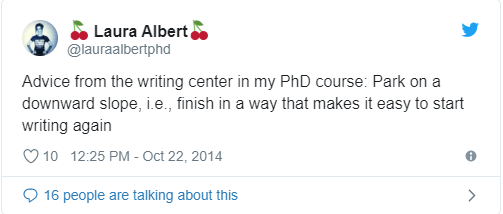“The secret of good writing is to strip every sentence to its cleanest components.”
William Zinsser, On Writing Well
In my previous post, I introduced an excerpt from On writing well by William Zinsser about how writing is work and we can learn to get better. What stuck with me from On writing well were his concrete tips for editing my drafts. This post contains a few extra tips for editing all of the “clutter” in my early drafts.
Fighting clutter is like fighting weeds—the writer is always slightly behind…
Is there any way to recognize clutter at a glance? Here’s a device my students at Yale found helpful. I would put brackets around every component in a piece of writing that wasn’t doing useful work. Often just one word got bracketed: the unnecessary preposition appended to a verb (“order up”), or the adverb that carries the same meaning as the verb (“smile happily”), or the adjective that states a known fact (“tall skyscraper”). Often my brackets surrounded the little qualifiers that weaken any sentence they inhabit (“a bit,” “sort of”), or phrases like “in a sense,” which don’t mean anything. Sometimes my brackets surrounded an entire sentence—the one that essentially repeats what the previous sentence said, or that says something readers don’t need to know or can figure out for themselves. Most first drafts can be cut by 50 percent without losing any information or losing the author’s voice.
My reason for bracketing the students’ superfluous words, instead of crossing them out, was to avoid violating their sacred prose. I wanted to leave the sentence intact for them to analyze. I was saying, “I may be wrong, but I think this can be deleted and the meaning won’t be affected. But you decide. Read the sentence without the bracketed material and see if it works.” In the early weeks of the term I handed back entire papers that were festooned with brackets. Entire paragraphs were bracketed. But soon the students learned to put mental brackets around their own clutter, and by the end of the term their papers were almost clean. Today many of those students are professional writes, and they tell me, “I still see your brackets—they’re following me through life.”
You can develop the same eye. Look for the clutter in your writing and prune it ruthlessly. Be grateful for everything you can throw away. Reexamine each sentence you put on paper. Is every word doing new work? Can any thought be expressed with more economy? Is anything pompous or pretentious or faddish? Are you hanging on to something useless just because you think it’s beautiful?
Simplify, simplify.
William Zinsser, On Writing Well
This process is work, and even experienced writers have to write many drafts that they ruthlessly edit.
Writing is hard work. A clear sentence is no accident. Very few sentences come out right the first time. Or the third. Keep thinking and rewriting until you say what you want to say.
William Zinsser, On Writing Well




